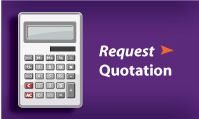
The battle to prevent counterfeiting has been ongoing since the invention of currency. Roman coins were frequently made of less valuable metals, or “clipped”, meaning a small portion of the gold or silver was clipped off the coin and retained by the counterfeiter. In 1860, Abraham Lincoln created the Secret Service as a separate operating unit under the Department of Treasury in an effort to stem a counterfeit crisis in the U.S., during which as many as 1/3 of all bills in circulation were counterfeit.
Rapid developments in technology over the last century have reshaped counterfeit security features in an attempt to make counterfeit identification easier while making production harder on counterfeiters. One method for combating counterfeits is the integration of UV fluorescent materials into the paper bills themselves. UV counterfeit currency detectors are used to detect special inks in the bills that only appear under the proper wavelength of UV light.
Successfully implementing UV security features into a national currency is a two-fold process. The first step entails printing currency with ultraviolet inks. UV inks specified by the U.S. Bureau of Printing and Engraving must utilize UV-fluorescent phosphors which can produce a reaction when placed under ultraviolet light, while at the same time remaining hidden (or, “covert”) when viewed under normal lighting conditions. When exposed to UV light, the UV ink changes its appearance and becomes visible to the human eye. This means that in normal lighting, the UV ink-printed security designs are not visible. The appearance changes drastically when placed directly under a UV light, producing a fluorescent appearance that is easily visible to the human eye.
The ability to integrate UV ink into physical materials as a security feature has been widely adopted due to its ease of implementation. In addition to paper currency, UV ink is also used to secure passports, credit cards, traveler's  checks, Social Security cards, and casino chips, among many other important documents. Such UV security features are valued because the materials used are highly volatile and can get corrupted quickly when inexperienced counterfeiters use commercially available digital printers and inks to create fakes. However, more advanced, professional high-volume printers utilizing more expensive printing equipment are able to handle the intricate technological challenges inherent in printing with the volatile UV compounds.
checks, Social Security cards, and casino chips, among many other important documents. Such UV security features are valued because the materials used are highly volatile and can get corrupted quickly when inexperienced counterfeiters use commercially available digital printers and inks to create fakes. However, more advanced, professional high-volume printers utilizing more expensive printing equipment are able to handle the intricate technological challenges inherent in printing with the volatile UV compounds.
But in order for UV ink to be an effective security feature, counterfeit currency detectors emitting UV light at the correct wavelength need to be widely available at banks and other places of commerce. Currently, a counterfeiter does not need to use UV ink to print their fake currency if they are trying to pass off the bills at a place where UV testing is not performed.
 Using a UV counterfeit currency detector has numerous advantages to a business. These devices are among the least expensive security solutions to aid in combatting counterfeit fraud. The devices are easy to use: since they are human-readable, employees need only to place a bill underneath the UV light and identify the glowing security feature to confirm that it is a valid U.S. bill.
Using a UV counterfeit currency detector has numerous advantages to a business. These devices are among the least expensive security solutions to aid in combatting counterfeit fraud. The devices are easy to use: since they are human-readable, employees need only to place a bill underneath the UV light and identify the glowing security feature to confirm that it is a valid U.S. bill.
But some businesses remain reluctant to adopt UV security screening because it relies on the transaction-level employee -- cashiers and tellers, namely -- to conduct the screening of currency. The thinking of some business managers is that, due to intentional oversights or poor training, it is possible for counterfeited bills to go undetected. They believe that it is too difficult for the employee to accurately identify a counterfeit bill.
And while replicating the UV security features in currency is difficult, it isn't impossible, meaning that some bills that pass the security test could still be counterfeit.
Still, with a low cost and an easy training process, UV counterfeit money detection is a practical approach for most businesses, particularly small businesses that can't afford extensive security measures but are also more susceptible to counterfeiting and fraud. Through this simple security measure, you can greatly reduce the threat of fraud and protect your bottom line.



